Finding the right running shoes for overpronation can be tricky with so many different brands. And of course determining if you even need a shoe for stability. Let’s look at the top models and what you need to know before selecting one.
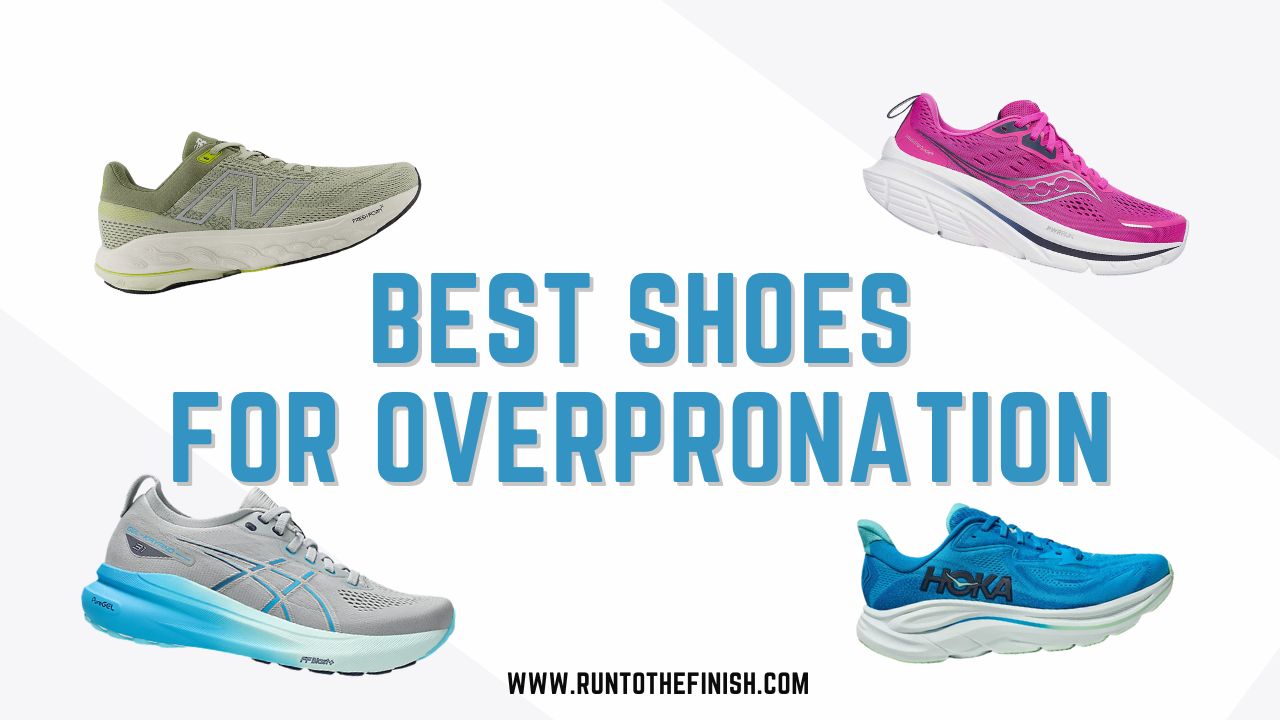
Everyone has some pronation while running, that’s natural and necessary. So if you hop on the treadmill at your running store and they tell you that you need a stability shoe, first ask yourself if you’ve been having any pain or issues while running?
They aren’t looking at your full leg movement, which could include a hip drop that’s causing your knee and foot to roll inward. In which case a stability shoe isn’t going to resolve the issue.
What is Pronation in Running?
As noted EVERYONE has some pronation to their foot and this is a good thing. According to Podatrists, the average person should have about 15% or a little less pronation to their step.
In order to absorb the shock of hitting the ground, your ankle and arch will slightly collapse in to the ground. During this your foot will roll from heel to forefoot so that you end up with more of your weight on the big toe. Your big toe is actually a powerful driver in your quick push-off the ground.
The degree to which you roll inward or outward determines the type of pronation that you have and will help guide you to making any necessary changes.
- Overpronation is when your foot rolls inward too far.
- Neutral pronation is when you don’t have excessive rolling inward or outward of the foot upon landing.
- Underpronation, also known as supination, is where your foot does not roll inward enough when you run or actually rolls outward.
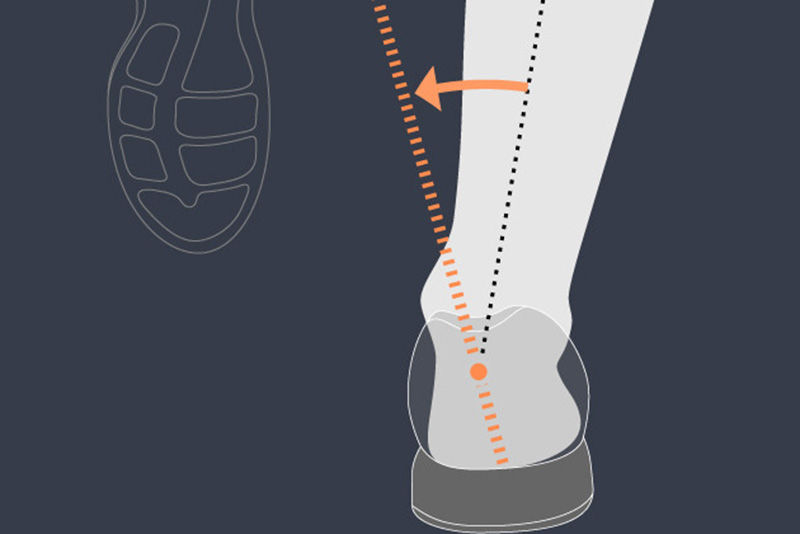
9 Best Running Shoes for Overpronation
Here are my suggestions for some traditional running stability shoes and some that will help with running overprontation, but aren’t forcing a correction.
Most Popular Stability Shoe – Asics Gel-Kayano
We recently did a full review of the Asics GEL Kayano and here it is again as a long-standing winner. It’s a favorite marathon training shoe and one that will help to provide you with the extra support your foot needs.
The Asics Gel Kayano 32 is known for its supportive, multi-density midsole and firmer foam through the arch. They’re one of the best motion-control shoes with firmer medial (inner) and softer lateral (outer) midsole sidewalls.
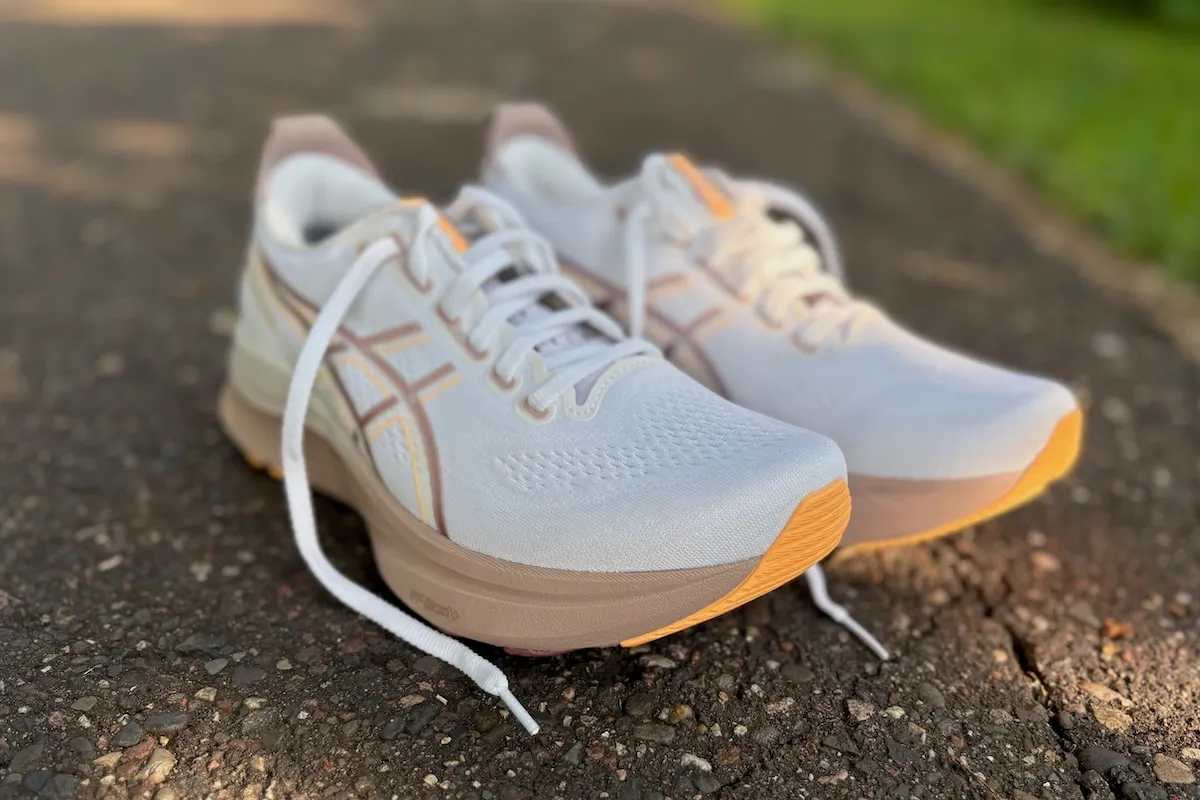
Its 4D Guidance System is the perfect fit for you if you overpronate since the PureGEL foam in the midsole helps your foot land in a more neutral position.
If in the past you’ve found the Gel Kayanos to be bulky, then the 32nd version is here to change your mind. It has a redesigned, three-layer midsole that feels soft, bouncy, and supportive but also lightweight at the same time.
The shoe has been designed to be a stability shoe for overpronators, but it’s highly popular for high-mileage neutral runners as well.
- Weight: 10.7 oz Men’s, 9.1 oz Women’s
- Stack Height: 40 mm
- Heel Drop: 8 mm
- Available in nine colors
- Available in wide and narrow
- Available at Asics.com for $165.00
- Read our full review of the Asics Gel-Kayano 32 here >>
Best Max Cushion Daily Trainer – Puma ForeverRun Nitro 2
When it comes to stability, Puma didn’t use a hard post, but rather it’s about the design of the shoe. Like a number of brands they’ve made the base of the shoe flare out in places which creates instant stability. Puma also included a more rigid heel counter and uses the new foam to create a feeling of support.
The ForeverRun Nitro 2 now has a wider midsole paired with dual-density NITROFOAM to give a little extra cushion underfoot. This combo was used in the design so that this would be a shoe that runners grabbed for those longer miles.
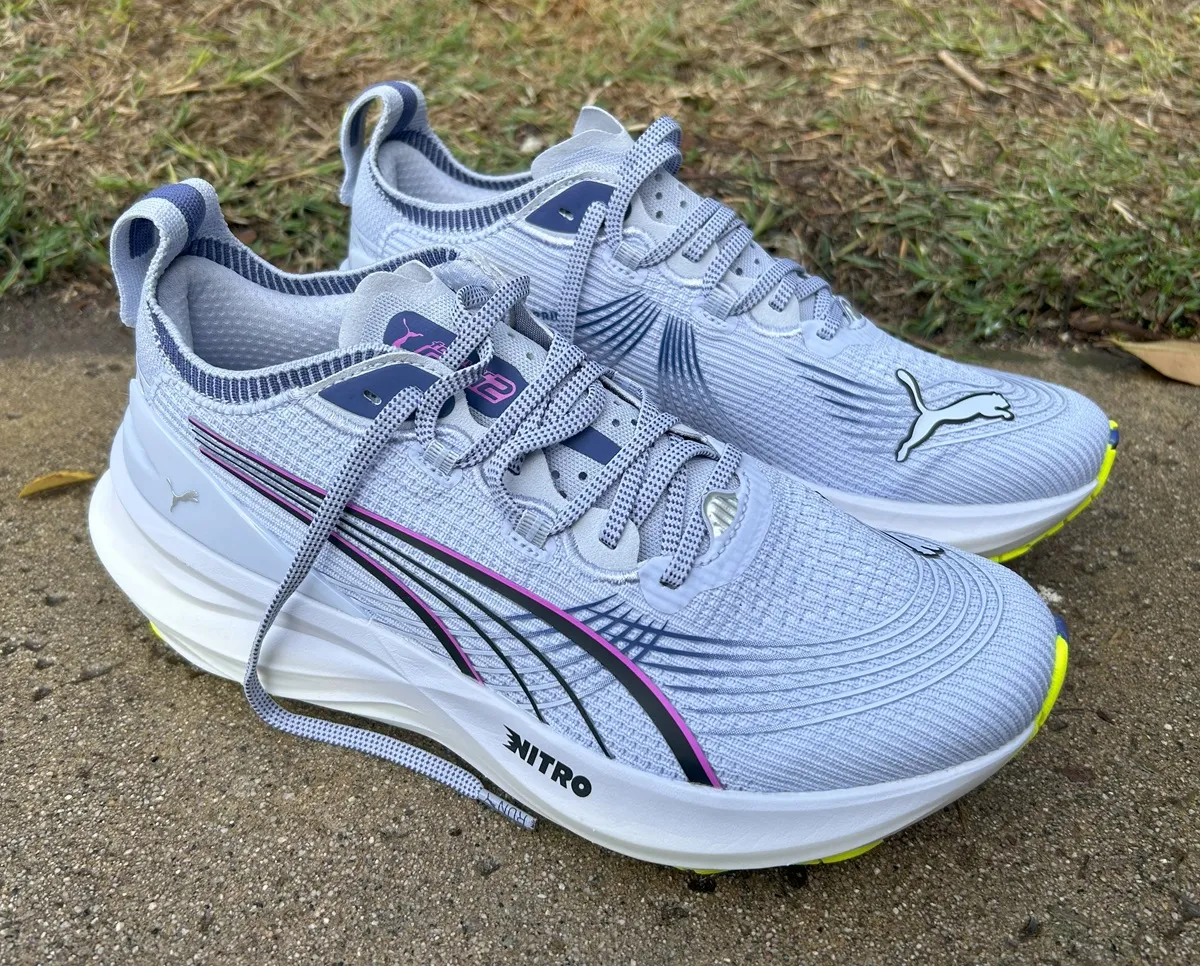
Puma upgraded to using dual-density NITROFOAM cushioning for a smoother, more supportive feel underfoot. The blend of a softer center foam and harder outer foam is going to give you that softeness with control.
- Weight: 10 oz Men’s, 9 oz Women’s
- Heel Drop: 10 mm
- Stack Height: 38 mm
- Available in 6 colors
- Not available in wide
- Available from puma.com for $150
- Read our full review of the Puma ForeverRun Nitro 2 here >>
Best for Long Runs – Saucony Guide
In this model, Saucony not only paid attention to the support below, but uses the upper for additional stability. It wraps around your foot, helping you feel more secure in the shoe.
It’s not overly built up, no massive stack height, no crazy cushioning. Just a solid daily trainer that is going to provide you with some nice cushion and decent support.
It incorporates Saucony’s PWRRUN cushioning, with the goal of being a moderate cushion shoe that offers inherent support as well which was something that many traditional stability shoes lacked. That’s my kind of shoe.
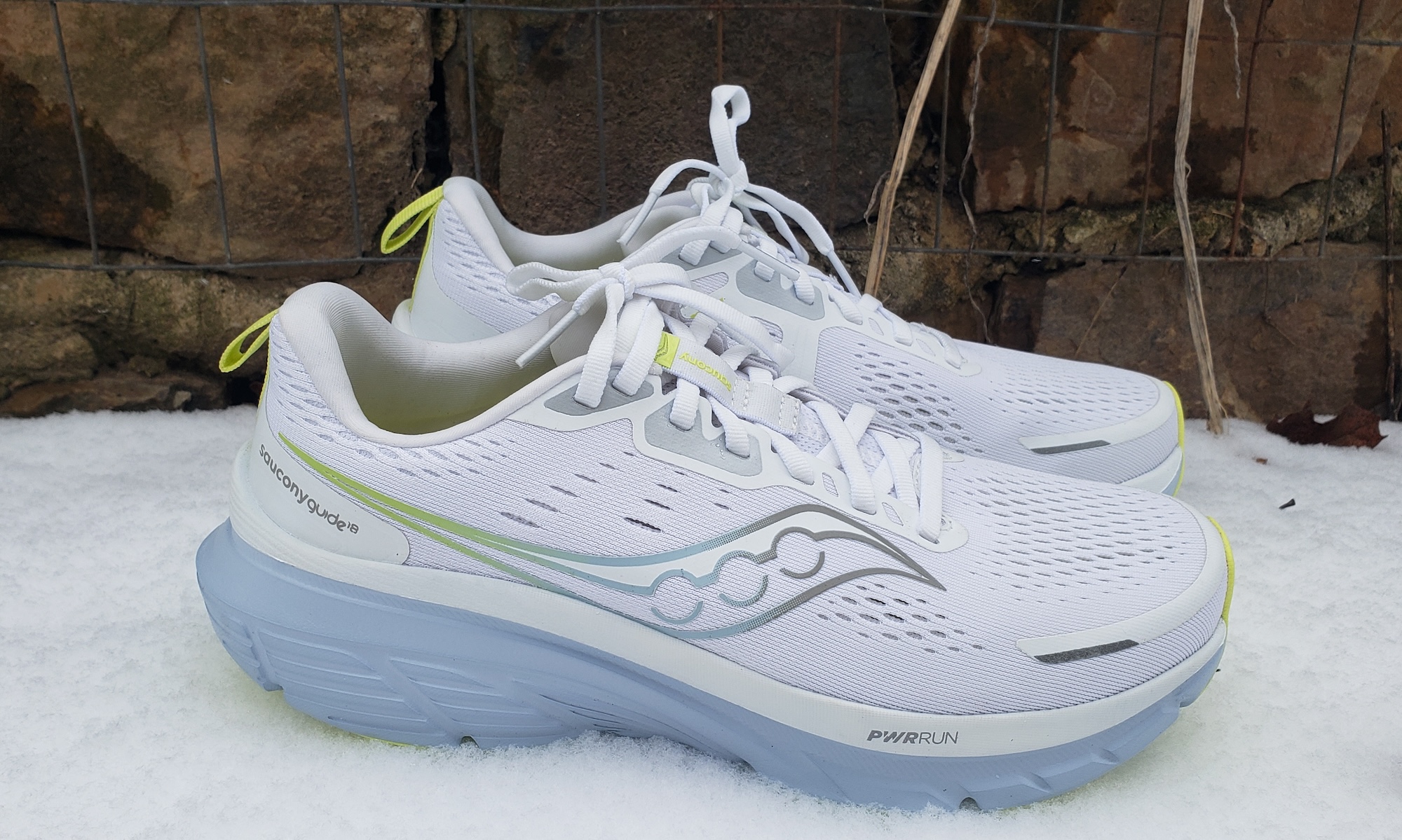 And as noted the stability is there, but without being aggressive so you aren’t feeling it…it’s just doing the job.
And as noted the stability is there, but without being aggressive so you aren’t feeling it…it’s just doing the job.
In fact, I have run in the Guide quite a bit and found it to be a great overall trainer. I wasn’t put off by any hard pieces or overcorrection.
- Weight: 9.6 oz Men’s, 8.6 oz Women’s
- Heel Drop: 6 mm
- Stack Height: 35 mm/29 mm
- 13 Colors for Women’s, 12 for Men’s
- Available in wide and extra wide
- Available on Saucony.com for $140
- Read our full review of the Saucony Guide 18 here >>
Best for Wide Feet – New Balance 860
The New Balance Fresh Foam 860 v14 has a full length medial wedge, which is just a fancier way of describing the extra layer of firmer foam along the inner part or arch of the shoe. This is there to ever so subtly tilt your foot outward, making it a game changer if you overpronate providing extra support.
The updated Fresh Foam X midsole provides more cushioning than before. With 38mm in the heel and 30mm in the forefoot (up from 35mm and 25mm in the v13), it feels softer underfoot while still maintaining the firmness needed for stability.
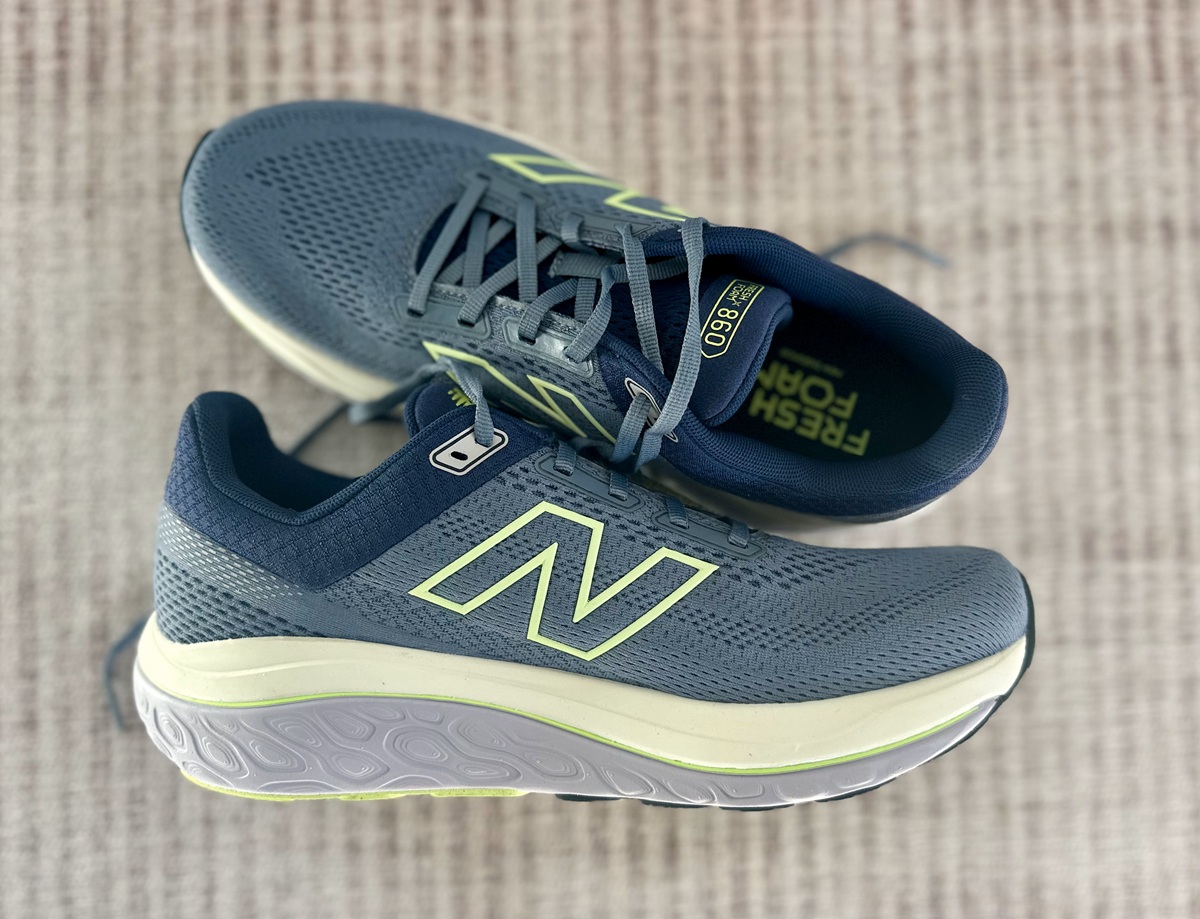
The breathable mesh upper keeps your feet cool and secure, and the cushioning is second to none.
It’s a stability running shoe that’s surprisingly light. It has a stretchy, spacious forefoot and toe box which feels comfortable and not too loose or sloppy.
- Weight: 10.8 oz Men’s, 8.7 oz Women’s
- Heel Drop: 8 mm
- Stack Height: 38mm
- Available in core and seasonal colors
- Available in narrow, wide and extra wide (in limited colors)
- Available on Newbalance.com for $140
- Read our full review of the New Balance 860v14 here >>
There are A LOT Of fresh foam numbered shoes, so note that the 880 is neutral cushion. The 860 is the stability option. Personally, I quite like the Fresh Foam which provides just the right amount of cushion for my runs from 3 to 20 miles.
Most Lightweight Shoe – HOKA Clifton
I’ve talked about this particular shoe in so many running shoe reviews, that you probably aren’t surprised to see it show up on a list for running shoes for overpronation!!
While the Clifton is not a stability shoe, HOKA’s are designed to provide more stability. The wider shoe base simply creates that effect naturally and thus often feels better than a shoe with a first post down the middle.

HOKA Clifton 10 will be released in just a few weeks and our team is excited to test it out!
This is probably the lightest option because it doesn’t contain any posts or other support structures.
- Weight: 9.8 oz Mens, 8 oz Women’s
- Heel drop: 8 mm
- Stack height: 42mm
- Available in 7 colors
- Available in wide, extra wide (colors limited)
- See the HOKA Clifton models and colors >>
Best for Speedwork Shoe – Brooks Hyperion 2
The Hyperion 2 is designed to help runners looking for, in their words, “that punchy, speedy feeling.” While it doesn’t have a carbon plate like some of the super trainers, the shoe is very lightweight and now has their Nitrogen-infused DNA FLASH v2 cushioning.
There are a few different models of the Hyperion, but the Hyperion 2 is the stability version of the shoe.
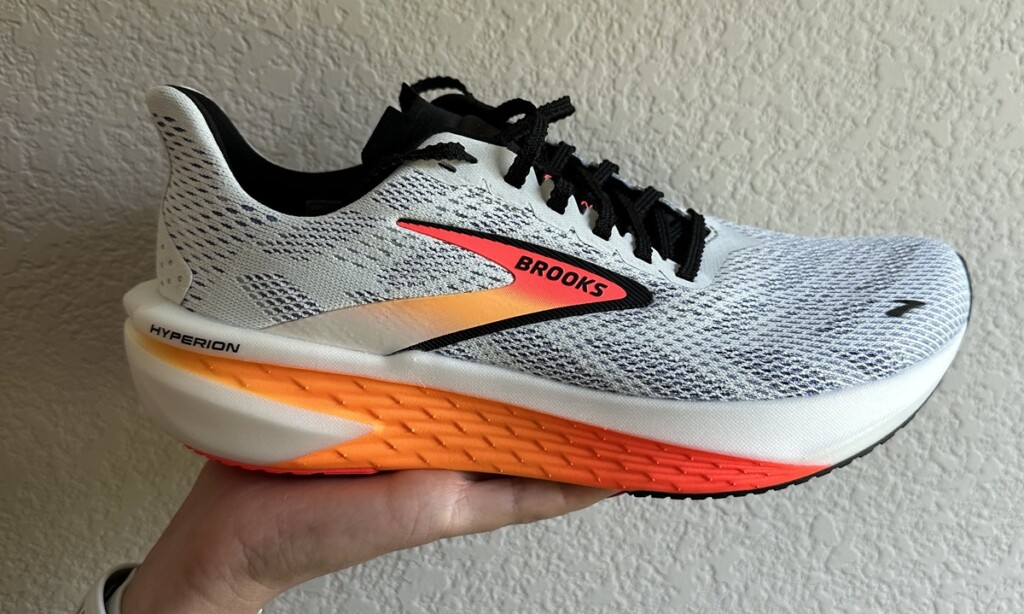
This road shoe is meant for everyday use, and that includes speed workouts and race days hitting the mark for the majority of mid-pack runners.
- Weight: 7.1 oz Men’s, 6.3 oz Women’s
- Heel drop: 8 mm
- Stack height: 34 mm
- Available in 6 colors
- Not available in wide
- Available on Brooksrunning.com for $140
- Check out our full review of the Brooks Hyperion 2 here >>
Best Race Day Shoe – Saucony Endorphin Pro 4
It’s fair to say that in general, I’m a fan of Saucony running shoes. Shoot I’ve worn Kinvara’s for a marathon early on and then as noted the first Endorphin pro in another marathon! But they aren’t the right shoe for everyone, particularly as they tend to run a bit narrow.
The Pro 4 is a shift from previous versions as it now utilizes the PWRRUN HG midsole foam, which was previously reserved for their top tier Endorphin Elite race shoe. This is known as their super foam with the most energy return. It also still contains the PWRRUN PB, which is almost as top tier being soft, bouncy and PEBA made for racing shoes.

If you want a stellar speed workout shoe or carbon plated shoe that feels a bit more stable and like your daily running shoes, this is the winner. Some of the really bouncy plated shoes seem to be causing achilles and foot issues, so this shoe is unlikely to have that result.
- Weight: 7.5 oz Men’s, 6.5 oz Women’s
- Heel drop: 8 mm
- Stack height: 39.5 mm
- Available in 8 colors
- Not available in wide
- Available now on Saucony.com for $225
- Check out our full review of the Saucony Endorphin Pro 4 here >>
Zero Drop Option, Widest Toe Box – Altra Provision 8
When I received the Provision I didn’t realize it was a stability shoe. But after wearing it alongside a few other models of Altra’s, that became much more apparent.
To me that’s a good sign! It means I didn’t feel the shoe changing anything when first using it, but upon comparison realized that it was limiting extra pronation.
By default your foot having a wider base and ability to spread-out should help with overpronation, IF you’re doing the foot strength work alongside the other pieces we discussed
I’d say this was right in the middle in terms of cushion. I chose to keep running in it over the Escalante with less cushion and the Olympus with a lot more.
- Weight: 9.6 oz Men’s, 8.2 oz Women’s
- Heel drop: zero drop shoe
- Stack height: 28 mm
- Available in 7 colors
- Not available in wide
- Available on Altrarunning.com for $140
Best Trail Shoe – Brooks Cascadia
I used these on all the trails when we first moved to Colorado! The GTX version will keep your feet dry for winter running or rainy days. These aren’t a shoe that I realized was a stability shoe while wearing it and for me that’s a win.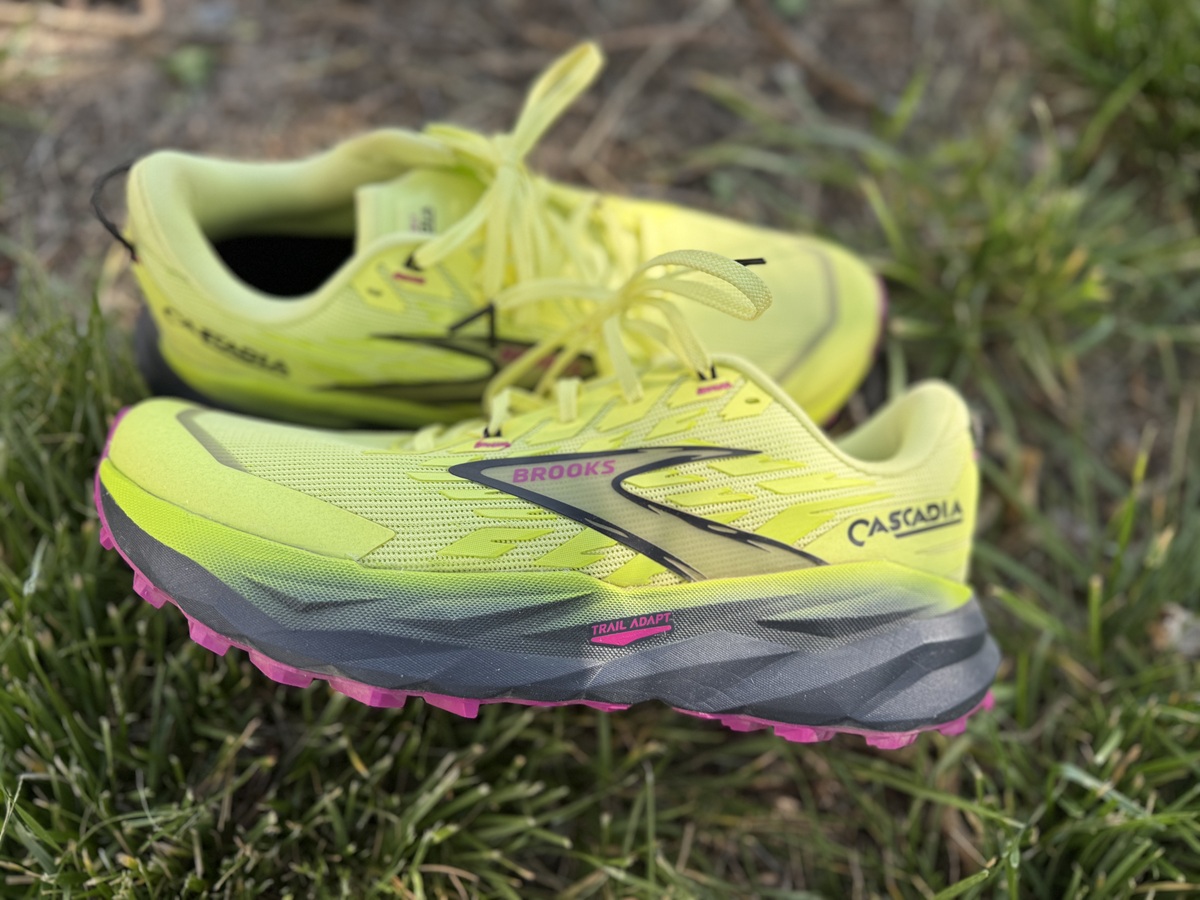
They’re also built for distance meaning they won’t wear down on you. Trail runners need shoes that offer stability and comfort whether their feet are wide or narrow.
- Weight: 11.1 oz Men’s, 9.9 oz Women’s
- Heel Drop: 8mm
- Stack height: 32 mm
- Available in 4 colors
- Available in wide for limited color options
- Available from Brooks.com for $140
Do You Need Stability Shoes for Overpronation?
One of the things that lead to injury for many runners is overpronation, which is when the arch falls in causing the ankle to roll in as well and sending strain up to the knee and hip.
An old rule was to look at the wear on your shoes. But we now know this isn’t really accurate.
A better way to tell is to visit a Physical Therapists and have them look at your stride. This will ensure that you don’t get a shoe to correct pronation which is actually caused by weak hips allowing your knee and ankle to collapse inward.
You can also try to video yourself in slow motion, but if you don’t know what to look for you may still miss the cause.
As always, my first recommendation is learning exercises that will strengthen your weak hips, glutes and core, instead of relying on the shoe to fix things for you.
If you don’t then over time you’ll create new areas of weakness and only mask issues for a little while.
With a foot strike that rolls too far outward or lacks enough mobility we are open to a lot of issues due to the excessive force placed on joints, tendons and overworked muscles.
If you are experiencing any of these issues, then it’s time to strengthen and grab a shoe for overpronation.
In fact, one 2019 study in Frontiers in Physiology showed that elite runners have more foot stability. This could point to why they are better able to prevent running injuries based on what we are now understanding about the power of your foot in the kinetic chain.
What Does a Stability Running Shoe Do?
- Remember ankles and feet are meant to move some, so you may pronate a little, but not need a stability shoe
- Stability shoes often feel firmer and lack that cushioned feeling
- Stability shoes are often over-recommended to runners who actually need to work on hip and glute strength
- Try alternating a neutral shoe with a stability shoe when you are working on strength and moving away from a shoe correcting your imbalances.
Although stability shoes and neutral running shoes share some characteristics, they also differ from one another. These shoes have supportive features built into the midsole, such as a medial post or guide rails.
The medial post is made of denser EVA foam which is a harder foam than that used to cushion the shoe. It is intended to provide support while slowing the rate of overpronation during your gait cycle. For decades, it has been the traditional method of adding support to shoes.
These supportive features help keep your foot in a neutral position. For runners with mild to moderate overpronation, stability shoes with this design are a great option. However, the drawback of these shoes is that they are slightly heavier.
All right that gives you a great place to start with running shoes for overpronation.
If you’re looking for more training tips:
- 13 Best Hip Strengthening Exercises for Runners
- Best Ankle Strengthening Exercises for Runners
- Should You Use Running Insoles or Orthotics
- Best Ankle Supports for Running
- How to Lace Running Shoes for More Support
- What is Heel Toe Drop in Running Shoes
Other ways to connect with Amanda
Instagram Daily Fun: RunToTheFinish
Facebook Community Chatter: RunToTheFinish
Sign Up to Receive a Weekly Newsletter with Top Running Tips and Laughs



 8 Best Budget Treadmills for Under $1,000
8 Best Budget Treadmills for Under $1,000